SOAR to Greater Heights
Posted on in In the Field by Merlyn Nkomo, former conservation science trainee
"Habitat is more than sticks and stones, it is a safe bedroom and a clean kitchen."
- Dr. Keith Bildstein, former Director of Conservation Science
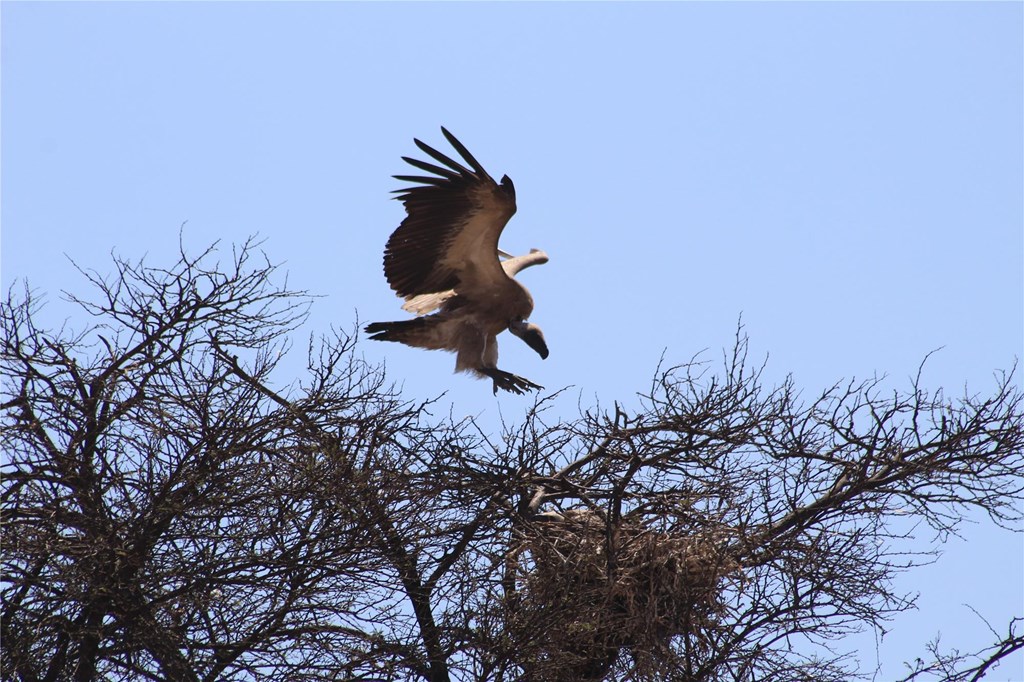
In Africa today, a myriad of threats face vultures, differing in intensity and locality. Over the past three decades, most species show declining populations, which leave some on the brink of extinction. All the threats are sadly anthropogenic, but this means they are not completely out of our control to fix. We can easily learn to do better, if we are willing. With such a situation in our hands, conservationists have become a Jack-of-all-trades and have learned to multi-task to give these raptors a fighting chance. To do this, we must mitigate threats in habitats, promote and secure safe areas for nursery and source clean, supplementary food through vulture restaurants. African conservationists have a great job to do in fundraising for this work, building networks with stakeholders to explore conservation synergies, as well as educating and raising awareness at different levels, from children in schools to policy makers in parliaments.
Debshan Ranch in Zimbabwe’s Midlands province is located in a region strangely unsuitable for crop cultivation in a primarily agricultural economy. As a result, regions like this one were gazetted by the government for cattle and wildlife ranching, with large portions of land set aside for this purpose. This ranch is privately owned and in the past, Cape vultures were once monitored at Debshan Wabai Hill’s cliff face annually, where the birds roosted and sometimes bred. These raptors are regionally endemic vultures and in recent decades have been under threat, and their range has contracted even further south. For this reason, Wabai Hill was demarcated as an Important Bird and Biodiversity Area by Birdlife International. Unfortunately, after the fast track land reform program, the section of land containing this hill was claimed by the government, fragmented, and allocated to resettling subsistence farmers, resulting in the complete loss of the colony that lived on that hill. Serendipity had it however, that after a disappointing monitoring trip at the hill, former Hawk Mountain trainees Ngoni Chiweshe and Nobuhle Mabhikwa discovered 12 nests of the critically endangered African white-backed vulture on the ranch property. This began the long-term monitoring effort using Debshan for breeding this species and others we have come to discover.
In June 2019, I received the great news from Hawk Mountain’s Director for Conservation Science, Dr. Laurie Goodrich, that I had been awarded a Hawk Mountain Project SOAR grant for this project. I work with my professor, Peter Mundy; lecturer-supervisor, Josephine Mundava, both of whom work for the local university; and Ngoni Chiweshe, a former Conservation Science Trainee, now one of Zimbabwe’s leading ornithologists working with CIRAD, a non-governmental research organization. Our work is determined by the availability of resources and ability to get away from day jobs for the survey. The SOAR grant will go a long way in keeping us in the field, doing this critical research.
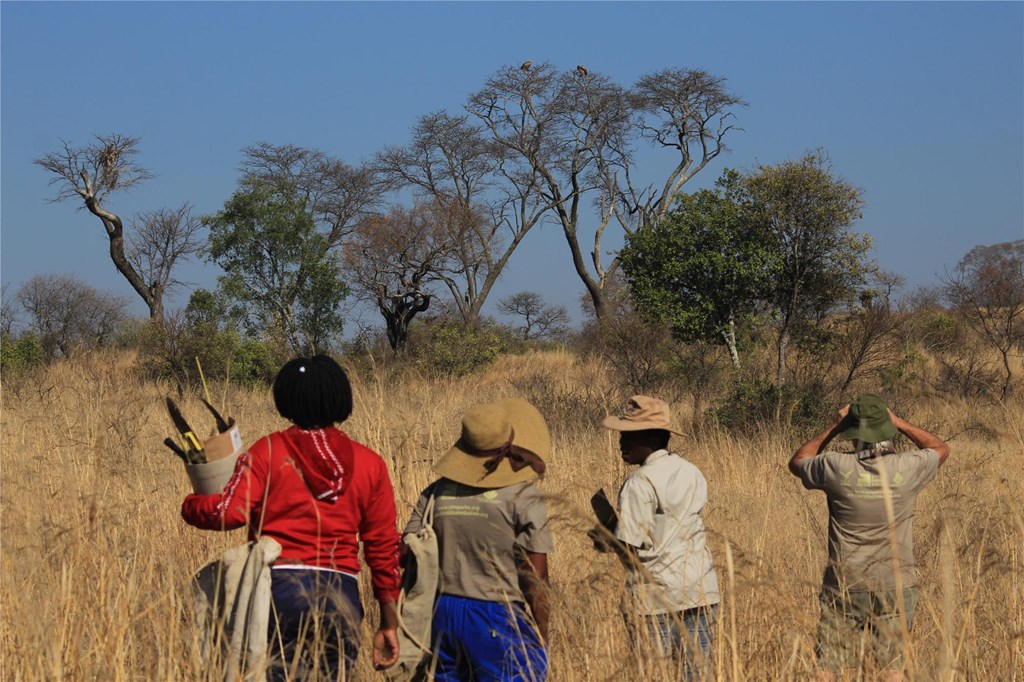
Our September visit to the ranch took 4 days. We set out to check for nestlings and ring them before they could fledge. The survey team on this trip included Mundy, Mundava, graduate researcher Lovelater Sebele, myself, and Lynnia Mukarati, a student interested in vultures who Mundy has dubbed my apprentice. We arrived at Debshan on the morning of September 16th, and after meeting with ecologist Ranga Huruba, we drove 35 km eastward to the Headquarters side where our current monitoring effort is and began work that afternoon. The job was simple; I was the tree climber and photographer, Lynnia marked and labelled the nest trees with a tiny aluminium plate, and the rest of the team helped find nests, then scribed and processed the chicks once they were lowered down. The first day was not easy, and I realized that, as the climber, I had committed to a very difficult task. I was thoroughly sore, scratched and bloody by sunset when I put the chick back on the nest, about an hour and a half after we had begun. However, nothing compares to the thrill of standing 15 meters off the ground, balancing on twigs and meeting face-to-face with a furry bowl of down and new feathers neatly tucked in. The birds had the choice to either lunge at my eyes or regurgitate their last meal right there, where I could not move an inch.
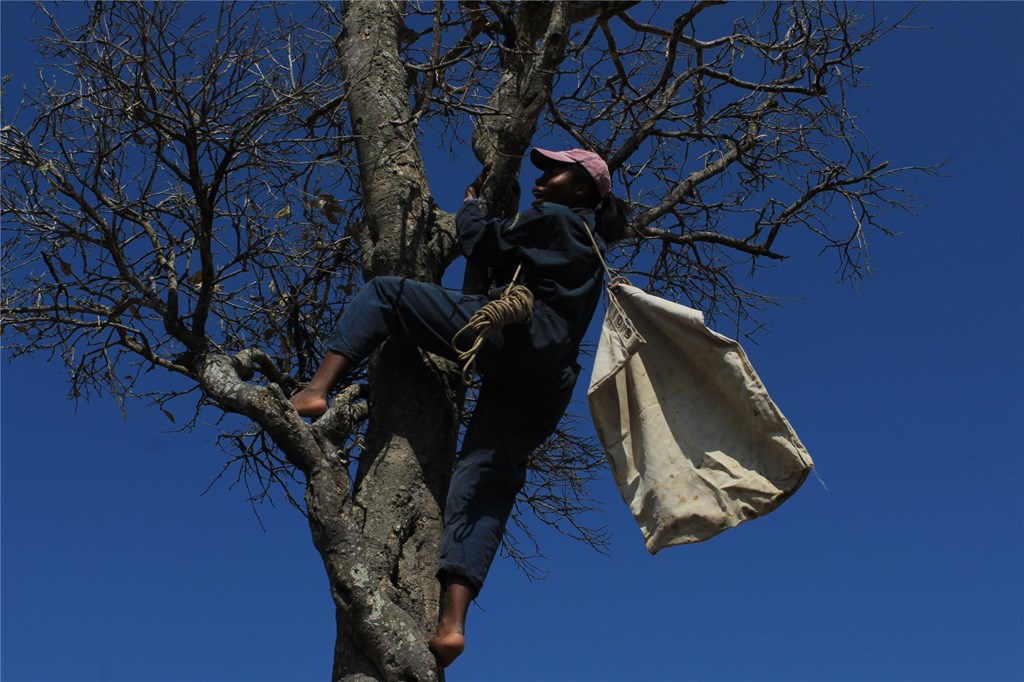
The next morning, Mundy convinced me to wear his old overalls. To our surprise they fit perfectly, and with a pocket for my phone for taking pictures, they were just the motivation I needed. It was easier to climb in the overalls, and we managed to get another chick processed and ringed. The other nest I climbed to was abandoned, and on a few other trees I could not find a safe route to the nest, so I descended with more bruises and cuts. For future surveys, we plan to first use a drone to check the nest contents, but even still we are looking to improve climbing technique and safety. I was fortunate on the third day when Ranga came to give his interns a feel for our field work and have them watch me climb. He also brought with him Max, the ranch’s expert tree climber. Max offered to climb for me after I had tried a few times, and I was not going to turn him down. I talked him through the process of extracting the chick, lowering it, and putting it back in the nest while watching from the ground. Max’s chick was the last we managed to ring, having gotten three in total—we only had 6 leg rings from Mundy’s ringing days.
On our last day, we had found over 40 nests, 38 of which belonged to vultures with 14 of them which failed. This year saw an increase in immature breeding pairs and more species of vultures utilising the property for breeding. Only 10 nests were reused, suggesting loose site fidelity. Although settlers blocked the road and we failed to reach Wabai Hill’s cliff face, where the colony of Cape vultures used to roost, we did see some adults in flight, a lappet-faced vulture pair, white-headed vultures, and many other raptors for some of which had active nests we found.
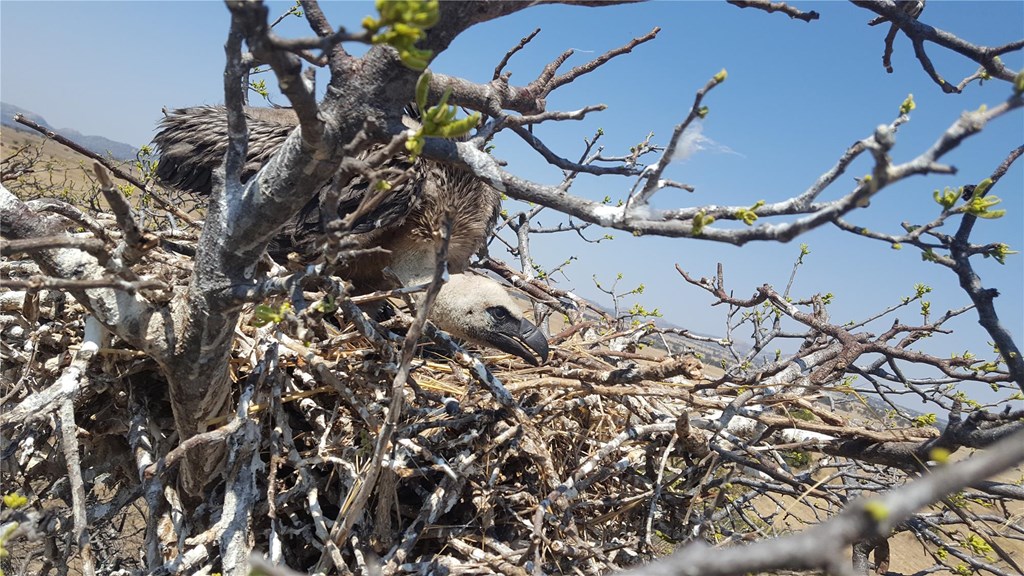
When our time on the ranch came to a close, we were very happy with the outcome of this year’s survey. We encountered a lot of game while driving around, including zebra, tsessebe, wildebeest and impala as well as a number of cow and wild game carcasses owing to Debshan’s healthy leopard population. This is very beneficial for the vultures, especially during the breeding season as parents can get safe food without ranging too far from their nests. We were also pleased to see that Ranga’s land management practices are benefitting the vultures by preventing bush encroachment caused by rotational grazing, kraaling cattle, and clearing grassland to make hay bales for stock feed.
We noted with concern the number of abandoned, failed nests, most of which had down feathers on the tips of the nest twigs. This suggests recent occupation with evidence of there having been a growing chick living there. On one of the last nests, we even found the remains of a chick still hanging on the branches next to the nest. Unfortunately, the tree was too challenging for me to climb and retrieve the dead chick for investigation, leaving us with questions on the cause of these mortalities within this population.
I am grateful for the Project SOAR grant I received and all the supporters of Hawk Mountain Sanctuary for making our field work possible this year, especially since this particular year was challenging economically in Zimbabwe. Going forward, our project aims to increase the survey area to the western side and to other surrounding properties. In the future, we plan to study the movement ecology of the birds and to enact proactive conservation efforts to combat the rampant poaching threat in the area. This will be important as a bull herd of elephants, which once used the ranch as a migration corridor, seem to have settled. Although studies on these elephants are still ongoing, I think our studies and efforts could assist one another, as elephant conservation has become interdependent with vulture conservation in Southern Africa, evidenced by occurrences like the June poaching incident in Botswana.
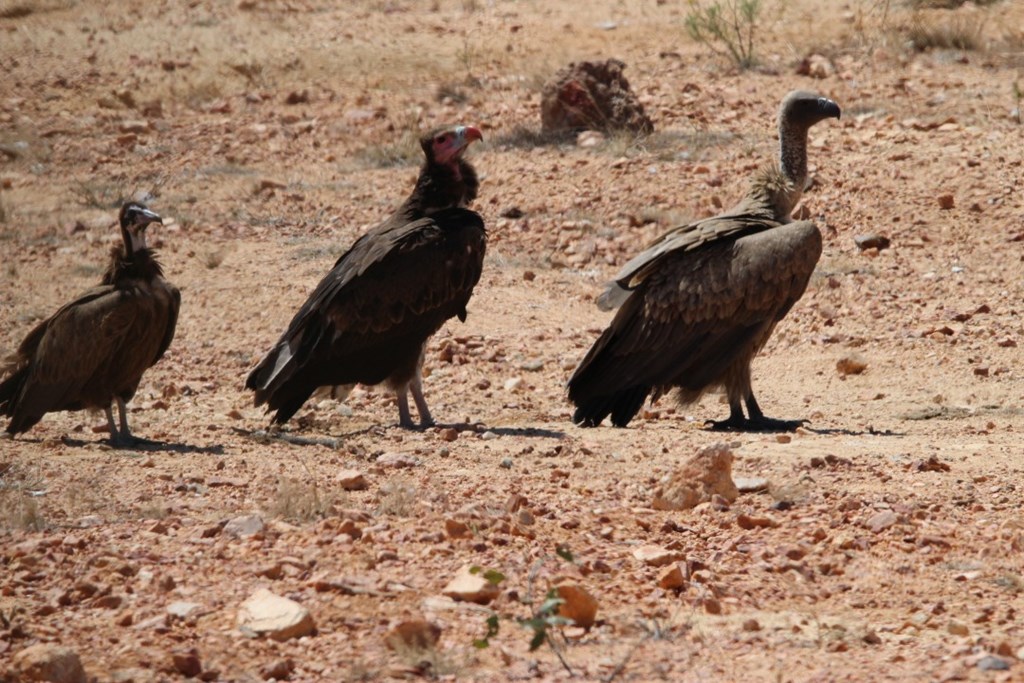
Ultimately, my goal is to see Debshan as a Vulture Safe Zone with a healthy, growing population and a refuge and nursery for all vulture species found in Zimbabwe. We can achieve this as long as our work continues and our interventions are proactive rather than reactive.
I would like to thank professor Mundy for the continued use of his vehicle for this survey and for being our driver and advisor. I would also like to thank the ranch ecologist Ranga for his continued support of this study, the management of availing resources, and for accommodating us every year. Lastly, I appreciate the survey team for their valuable expertise and shared passion for vulture conservation.